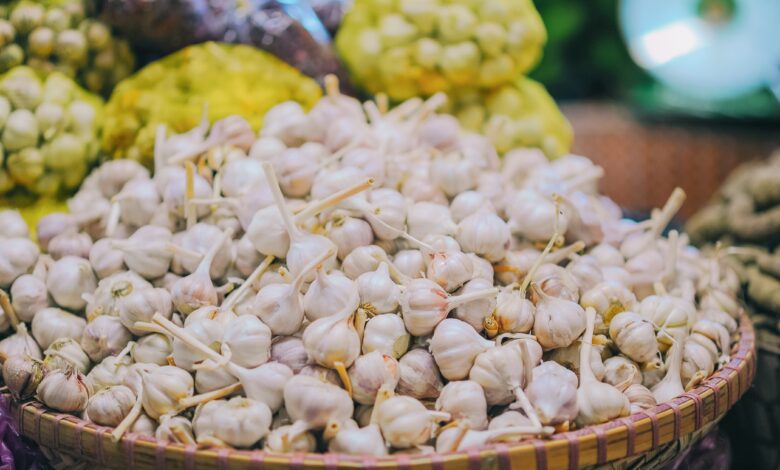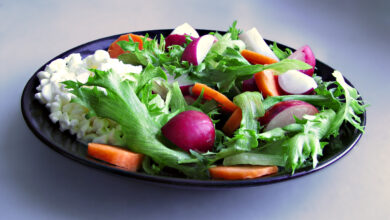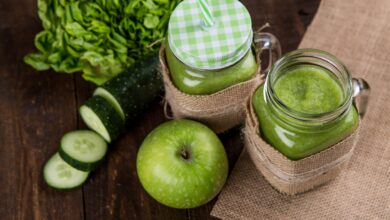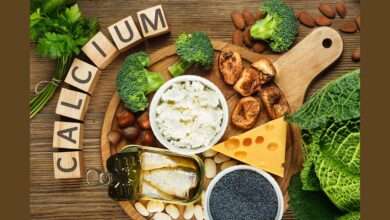
Garlic is one of the major condiments in French cuisine. For good reason, its powerful flavor has no equal to enhance the taste of our favorite dishes. White, red or purple, it is grown all over the world to the delight of food lovers. On the nutrition side, garlic is not to be outdone since it has an atypical profile which has earned it the status of a true health ally.
Characteristics of garlic
- Rich in antioxidants;
- Source of sulfur compounds;
- Promotes cardiovascular health;
- Anti-cancer properties;
- Rich in taste and low in calories.
Nutritional and caloric values of garlic
Consumed in small quantities, garlic provides few nutrients. On the other hand, consumed in larger quantities during a day, garlic proves to be a source of some nutrients. For example, a garlic bulb (approximately 40 ml or 24 g of garlic) is a good source of manganese and vitamin B6, as well as a source of phosphorus (see our Phosphorus nutrient ranking sheet), iron , copper, selenium and vitamin C.
| What is a “portion” of garlic worth? | |
| weight/volume | Raw garlic, 3 g / 1 clove |
| Calories | 4 |
| Proteins | 0,2 g |
| Carbohydrates | 1,0 g |
| Lipids | 0,0 g |
| Dietary fiber | 0,1 g |
Garlic contains many active compounds, which provide various health benefits. Some of these compounds are attributed several roles. This is the case, among others, for sulfur compounds, which are associated both with the prevention of cancer and cardiovascular diseases. It should be noted that not all of garlic’s phytochemical molecules are active in the body and that some have yet to be discovered. Note that the active ingredients in fresh garlic work synergistically to produce different health effects. Among these active ingredients, we can cite:
- sulfur compounds. These substances are so named because they contain one or more sulfur atoms in their chemical structure. Sulfur compounds are released when garlic is cut, crushed or crushed. At this point, alliin (an inactive and odorless molecule in garlic) comes into contact with an enzyme and turns into allicin, which is the molecule responsible for the characteristic smell of garlic. Subsequently, allicin is transformed into other sulfur compounds such as diallyl sulfide, diallyl disulfide and ajoene. It is mainly these compounds that could prevent certain cancer cells from multiplying and thus protect the body against potential carcinogens. It should be noted that when making garlic tablets, allicin would be destroyed,
- Allicin has been proposed as the main active compound associated with the cardioprotective effect of garlic, among other things through its ability to reduce atherosclerotic plaques in animals. On the other hand, when taking into account that allicin is not absorbed into the blood during garlic consumption, it is unlikely that it contributes as such to the effect on cardiovascular health. Allicin would rather be a transient compound quickly transformed into other sulfur compounds which are active in the body. Finally, ajoene would be a compound capable of preventing the synthesis (formation) of cholesterol in vitro and could thus play a role in the hypocholesterolemic effect attributed to garlic;
- Saponins are compounds present in garlic that have the ability to reduce blood cholesterol in animals and blood coagulation in vitro, two effects sought for the prevention of cardiovascular disease. In addition, it has been shown in animals that isolated garlic protein could have a lipid-lowering effect. These promising compounds could therefore be associated with the cardioprotective effect of garlic, but more studies will be needed to better understand their roles.




